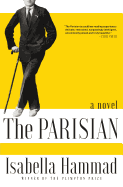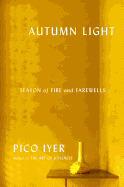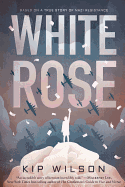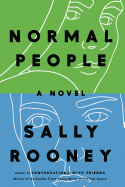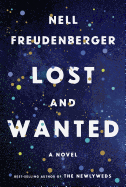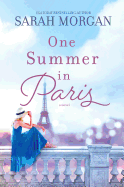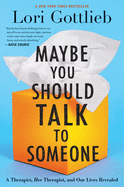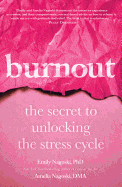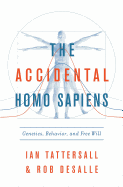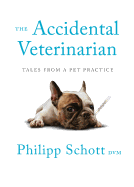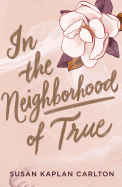Friday, April 19, 2019
It's hard not to fall for an interactive board book. Pop-ups, lift-the-flaps, die-cuts... all demand a reader pick the book up and play. How could you not? Here are some recently published board books for pre-readers to eight-year-olds that are near impossible to resist.
 Julia Shigarova's Max the Rabbit Gets a Present (Clever Publishing, $7.99, ages 0-3) features a group of animal friends discussing what gift they should give to friend Max. A ball? A nutcracker? Music? With each new page turn, a die-cut puzzle piece is revealed. By the time the last page is reached, the reader has four puzzle pieces to arrange and place in a ready-made spot. When put together, the illustration shows Max accepting his (delicious) gift.
Julia Shigarova's Max the Rabbit Gets a Present (Clever Publishing, $7.99, ages 0-3) features a group of animal friends discussing what gift they should give to friend Max. A ball? A nutcracker? Music? With each new page turn, a die-cut puzzle piece is revealed. By the time the last page is reached, the reader has four puzzle pieces to arrange and place in a ready-made spot. When put together, the illustration shows Max accepting his (delicious) gift.
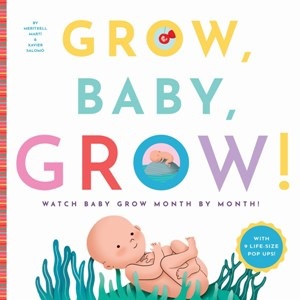 For readers ages five to seven, Meritxell Marti and Xavier Salomo have created Grow, Baby, Grow! (Familius, $24.99), a pop-up book that allows readers to engage with a life-size baby that grows month by month. Starting as a small as a pearl inside an oyster, "you" grow to the size of a cherry, a "little frog," a "starfish surrounded by coral," until eventually, "in the ninth month, you [take] your last naps" and--now actual-newborn size--wait "for the exciting day of your birth."
For readers ages five to seven, Meritxell Marti and Xavier Salomo have created Grow, Baby, Grow! (Familius, $24.99), a pop-up book that allows readers to engage with a life-size baby that grows month by month. Starting as a small as a pearl inside an oyster, "you" grow to the size of a cherry, a "little frog," a "starfish surrounded by coral," until eventually, "in the ninth month, you [take] your last naps" and--now actual-newborn size--wait "for the exciting day of your birth."
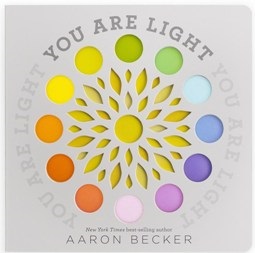 Aaron Becker's You Are Light (Candlewick Studio, $15.99) uses die-cuts and transparent paper to give readers ages four to eight an interactive experience with the concept of light. With each page turn, the colored paper in the different die-cuts matches the spare text, for example, blue "sips the sea/ to make the rain." And, when the book is held up to a light, the circle of rainbow colors shines, allowing readers to make colorful patterns or simply enjoy the pretty effect. --Siân Gaetano, children's and YA editor, Shelf Awareness
Aaron Becker's You Are Light (Candlewick Studio, $15.99) uses die-cuts and transparent paper to give readers ages four to eight an interactive experience with the concept of light. With each page turn, the colored paper in the different die-cuts matches the spare text, for example, blue "sips the sea/ to make the rain." And, when the book is held up to a light, the circle of rainbow colors shines, allowing readers to make colorful patterns or simply enjoy the pretty effect. --Siân Gaetano, children's and YA editor, Shelf Awareness
The Parisian
by Isabella Hammad
The Parisian is Isabella Hammad's remarkable exploration of a Palestinian man's life within the broader geopolitical context of World War I and the British Mandate in Palestine. Midhat Kamal is a teenager in Nablus, a city north of Jerusalem, at the cusp of the war, born into a wealthy merchant family. Eager for his son to avoid military duty, Midhat's widowed father sends him to Montpelier, France, to study medicine. At 19, he is restless for new adventures and promptly falls in love with his French host's daughter, Jeannette.
Thwarted love and family obligations bring the young man back to Nablus, via Paris and Cairo, during the British occupation of Palestine. As the country braces for the independence promised by the British, Midhat struggles to settle down. His heart still belongs to Jeanette, and the aftershocks of their romance reverberate throughout his life. Midhat's acquired French sensibilities are at odds with the Arabic tastes of his Nablusi community, where his elegant sartorial choices earn him the nickname "The Parisian."
Hammad's debut is a triumph in its historical depth, bringing to life world events that are usually dusty, dry facts buried in history books. As circumstances beyond his control destabilize Midhat, Palestine, too, is undermined when the British commitment to statehood fails to materialize. Hammad expertly guides the reader through the markets and mountainous regions of Nablus, the teeming cities of Cairo and Constantinople, charming Montpelier and the intellectual energy of Paris.
As a British Palestinian, Hammad offers a nuanced vantage point from which to comprehend and contextualize present-day conflicts in the Middle East. --Shahina Piyarali, writer and reviewer
Discover: A big, bold love story nestled within a powerful drama about the centuries-old Palestinian struggle for independence.
Normal People
by Sally Rooney
Normal People, nominated for the 2018 Booker Prize, is Irish writer Sally Rooney's follow-up to Conversations with Friends. Like her first novel, it's a spare, incisive story of intellectually sharp millennials navigating love and life.
Connell and Marianne are schoolmates in Sligo, where their social statuses are clearly defined. When Connell arrives at Marianne's to pick up his mother, who cleans for the family, Marianne initiates a flirtatious banter, opening a path for what becomes an often tender, sometimes contentious and always secret relationship.
Connell and Marianne conceal their affection at school (where he is a popular football hero and Marianne is scholarly and enigmatic) and at home (where her brother and mother would disapprove). They become intimate, and Connell thinks "no conflict has to arise, he never has to choose one thing over another." After a three-month gap between secondary school and college, however, their paths cross again briefly at Trinity.
For the next four years Marianne and Connell are separated by other lovers and pursuits, but continue to reunite in various iterations of their relationship. Common experiences continue: academic excellence and a shared intuition, "like speaking a private language," Connell thinks. Near the book's end, Marianne muses, "All these years they've been like two little plants sharing the same plot of soil, growing around one another, contorting to make room, taking certain unlikely positions." Rooney doesn't provide a happy-ever-after ending, but a sense that these two memorable characters who have come of age together will continue to thrive. --Cheryl Krocker McKeon, manager, Book Passage, San Francisco
Discover: Irish author Sally Rooney's second novel is a coming-of-age story whose protagonists come from different social classes but share intellectual acuity and an abiding affection.
Lost and Wanted
by Nell Freudenberger
Nell Freudenberger (The Newlyweds) weaves together physics, grief and love in her third novel, Lost and Wanted. When MIT physicist Helen Clapp hears of her college roommate Charlie's death, she's stunned. Charlie had lupus, but Helen--a rationalist to her core--struggles to believe that she could truly be gone. And when she begins receiving calls and texts from Charlie's phone, which went missing following her death, Helen isn't sure what to believe.
Dedicated equally to her work and to her young son, Jack, Helen doesn't have time for metaphysical conundrums. But the texts from Charlie's number keep coming, with questions about science and wry quips that sound oddly familiar. Meanwhile, Charlie's husband and daughter have temporarily moved in downstairs. And Helen's former colleague (and ex-boyfriend) Neel is rapidly approaching both marriage and a Nobel Prize-level breakthrough. Helen grapples with her complicated present-day feelings for Neel while remembering their shared history, and looking back on the formative years of her friendship with Charlie. Known for her accessible science writing, Helen struggles to explain this set of mysteries: the fact of Charlie's death, their complicated but enduring friendship and the messages that seem like they're coming from beyond. Freudenberger's keen eye for human relationships is matched only by her compassion for each character, even Charlie's patrician, often difficult mother.
Wry, absorbing and deeply compassionate, Lost and Wanted is a thoughtful exploration of both complex physics concepts and the deeper mysteries of the human heart. --Katie Noah Gibson, blogger at Cakes, Tea and Dreams
Discover: Nell Freudenberger's wry, compassionate third novel takes on big questions of physics, grief and love.
One Summer in Paris
by Sarah Morgan
British author Sarah Morgan brings a fresh, vibrant approach to this tale of a wife coping with the ultimate betrayal. Small-town Connecticut schoolteacher Grace Porter is stunned when her adored husband of 25 years asks her for a divorce and reveals he's having an affair with a younger woman. Craving respite from all the attendant drama, Grace decides to take their scheduled month-long anniversary trip to Paris by herself.
What could have been a lonely sojourn turns into a life-changing time-out as Grace bonds with a street-wise British girl named Audrey, reconnects with her first love and immerses herself in the charm and delight that is Paris. Grace begins to examine her heart and the possibility for change, and remembers the adventurous, creative person she was before the tragic death of her parents sparked a need to micro-manage her world. Has she traded freedom for safety all these years? She's firmly certain that her husband's mid-life crisis is solely his responsibility, but what does she want from her own life at this point?
When fate brings together Grace, her husband, their daughter and Audrey in Paris, the character of each individual, recently tested by personal crises, must guide their paths forward. This well-plotted novel, filled with warmly engaging and authentic characters, is a poignant, hopeful and heartwarming story that fans of quality women's fiction will not want to miss. --Lois Dyer, freelance book reviewer
Discover: A small-town school teacher rediscovers her true self and finds a new beginning after marital problems send her flying to Paris.
Biography & Memoir
Germaine: The Life of Germaine Greer
by Elizabeth Kleinhenz
How do you write an authoritative biography of a living subject who won't participate in the project? If you're Elizabeth Kleinhenz (A Brimming Cup), the answer is, with the help of a resource unavailable to the subject's previous biographer: the Germaine Greer Archive at the University of Melbourne.
Greer was born into a lower-middle-class Melbourne family in 1939. From her convent school, she went to the University of Melbourne, where she studied literature and became recognized as much for her flamboyance and sexual boldness as for her brilliance. Greer's further scholarly pursuits, as well as her diversions, which included immersing herself in her generation's rock scene and cofounding a pornographic magazine, informed her landmark feminist work, The Female Eunuch, published to international acclaim (and some bafflement) in 1970. The book argued that women's true sexuality is their path to freedom because, as Kleinhenz summarizes Greer's thesis, "the bodies of women have been effectively castrated for the convenience of men." Kleinhenz doesn't skimp on her subject's sexual adventures (some with famous men), and she animatedly covers Greer's literary output, public missteps and delight in publicity, the gist of which is captured in several of the biography's dozen-odd photos.
In her introduction to Germaine: The Life of Germaine Greer, Kleinhenz writes that her ambition is to measure her subject's influence on second-wave feminism. While Kleinhenz isn't starry-eyed about Greer, she occasionally overreaches, as when she says that her subject is "probably the best-known feminist of the twentieth century." Gloria Steinem's acolytes might say otherwise. --Nell Beram, author and freelance writer
Discover: This biography of feminist icon Germaine Greer is as entertaining and wise as its notoriously prickly subject.
Psychology & Self-Help
Maybe You Should Talk to Someone: A Therapist, Her Therapist, and Our Lives Revealed
by Lori Gottlieb
Psychotherapist and author of the Atlantic's "Dear Therapist" column, Lori Gottlieb (Marry Him: The Case for Settling for Mr. Good Enough) has spent time both in the therapist's seat and on the couch. In this memoir of crisis and healing, she illuminates the therapist-client relationship by describing her therapy experience during a personal crisis, supplemented with the stories of three special clients she counseled in the same period.
When Gottlieb's boyfriend breaks off their relationship, citing an aversion to helping raise her son, she's completely taken by surprise. After asking for referrals "for a friend," she chooses Wendell Bronson as her therapist, in part because he has children and therefore seems more likely to share her opinion that her now-ex is, in fact, a sociopath. Instead, Gottlieb's sessions with Bronson take her on a trek through the fears and worries she hasn't expressed, even to herself.
At the same time, in her own practice, Gottlieb counsels three clients who make lasting impressions. Julie, a young newlywed, needs to work through the grief of a death--her own, approaching quickly due to a rare cancer. John--who calls Gottlieb his hooker because he pays her in cash to hide her existence from his wife--conceals a tragedy under his snarky façade. Rita, a divorced senior citizen, wants to commit suicide if her life doesn't improve over the next year.
Wry and compassionate, Gottlieb offers an intimate perspective on client-therapist interaction and insight into the therapist's point of view. The juxtaposition of her experiences as client and practitioner brings a candor to the narrative that emphasizes therapists not as experts, but as feeling human beings. --Jaclyn Fulwood, blogger at Infinite Reads
Discover: In this raw, thoughtful memoir, Lori Gottlieb, who writes "Dear Therapist" for the Atlantic, explores the client-therapist relationship from both sides.
Burnout: The Secret to Unlocking the Stress Cycle
by Emily Nagoski and Amelia Nagoski
Emily Nagoski's first book, Come as You Are, explored how women's sexuality works and the science behind why it works that way. When readers told Nagoski that the most meaningful parts of the book were those that dealt with stress and emotions, she realized that there was a second book waiting to be written. And so Burnout: The Secret to Unlocking the Stress Cycle was born, a collaboration between Nagoski and her twin sister, Amelia Nagoski.
Burnout offers readers tips and ideas for how to help themselves through stress and burnout. But it also puts this advice in a larger context, acknowledging that women are up against often insurmountable barriers--dubbed "The Patriarchy. (Ugh.)"--and providing extensive scientific research to back up claims of what women feel in the midst of burnout, with suggestions on ways to change those feelings. The authors also argue that their advice is best understood not in the context of the individual self, but in how we exist in community with one another. In this light, calling Burnout a self-help book feels somehow too limiting. Instead, it may be more accurately described as a scientific, humorous activist's guide to helping oneself through the lens of community and connection. Burnout is an important and timely read that both acknowledges the intricacies and challenges of the age we live in and offers readers concrete and practical steps to find hope and joy amid those challenges. --Kerry McHugh, blogger at Entomology of a Bookworm
Discover: Good advice, grounded in scientific research, for women seeking to break out of burnout.
Science
The Accidental Homo Sapiens: Genetics Behavior and Free Will
by Ian Tattersall and Rob DeSalle
At the heart of the admirable and lucid The Accidental Homo Sapiens by Ian Tattersall and Rob DeSalle (A Natural History of Wine) is the effort to expose the flaws of reductive thinking that pervade both popular science and the hypotheses of rival scientists. These oversimplifications abound in writing about genes, evolution, culture and behavior.
On genes, the authors note that "most... influence more than one trait--while most character spectra... are influenced by many genes. Seeking one-to-one correspondences between protein-coding genes and specific phenotypic characteristics is thus for the most part a fool's errand." In particular, the authors argue that evolution acts on the individual, rather than the gene, contrary to Richard Dawkins (The Selfish Gene) and others.
Tattersall and DeSalle also challenge evolutionary psychology, stating that humans "are not, as some suppose, prisoners of a hypothetical Ice Age 'environment of evolutionary adaptation' that reflects itself in bizarre and inappropriate reactions to our changed modern circumstances." Essentially, human beings are not trapped by genetic destiny or evolution, but are individuals capable of making choices, for good or for ill.
Beyond arguing what humans are not, the authors establish what humans distinctly are: the only creatures to think symbolically and create private worlds in their heads. This thinking allows complex socialization, choice and flexibility, all within the frameworks of genes and environment.
Clear and pertinent digressions on the Homo family tree and statistics (without too much math) round out the work. --Evan M. Anderson, collection development librarian, Kirkendall Public Library, Ankeny, Iowa
Discover: The Accidental Homo Sapiens is a necessary corrective to the notion that the human individual is fully subordinate to genes and evolution.
Travel Literature
Autumn Light: Season of Fire and Farewells
by Pico Iyer
Readers for whom the name Pico Iyer (The Year of Stillness; The Man Within My Head) conjures up images of a globetrotting journalist posting from places like Dharamsala may be surprised by the domesticated version of him they encounter in his elegiac memoir, Autumn Light. But with the beauty of its prose and the quality of its insight, this gentle, reflective reminiscence reveals again Iyer's literary virtuosity.
Focusing on two months in the late fall of 2013, Iyer eloquently describes his life in Nara, a "rustic town" located about 20 miles from Kyoto that boasts the largest municipal park in Japan, home to 1,200 wild deer. For six months each year Iyer and his wife, Hiroko, live in a two-room apartment there, in a "bright, rectilinear neighborhood of vending machines and hair salons."
Much of what makes Autumn Light so enchanting is the effortless way Iyer extracts meaning from life's quotidian details, like his frequent visits to the local ping-pong club. He writes movingly of the season "when everything falls away" with a keen appreciation of the natural beauty that surrounds him. Yet even in arresting passages that portray the "reddening of the maple leaves under the blaze of ceramic-blue skies that is the place's secret heart," or a path that's "still carpeted in scarlet and orange, so thick I might be walking on a crackling, seething Persian rug," he reveals fundamental truths in an unobtrusively aphoristic style.
Autumn Light's brief, meditative passages make this an ideal volume to read and read again for both pleasure and wisdom. --Harvey Freedenberg, freelance reviewer
Discover: Pico Iyer's memoir marries beauty and sadness in describing his life in Japan one autumn.
Pets
The Accidental Veterinarian: Tales from a Pet Practice
by Philipp Schott
Like most children, Canadian Philipp Schott was fascinated with animals. Other than "Bobo the Christmas Gerbil," however, he didn't grow up with pets. He had never even set foot in a clinic when electing studies at University of Saskatchewan. Yet proceeding through the catalogue, he eliminated courses until left with the last on the alphabetical list, Veterinary Medicine.
Two decades into his "chosen" vocation, Schott has a second somewhat accidental career as a writer. The Accidental Veterinarian shares Schott's stories of getting past his self-consciousness dealing with people to create a thriving practice of his own (clearly and empathetically communicating with owners being an axiomatic prerequisite--sometimes frustrating, often hilarious--to a vet helping the creatures they love).
Originally writing about travel and whiskey as an outlet from work, Schott found veterinary medicine "a story machine" and eventually began a blog in which many of these pieces originally appeared. Separated into four parts (the making of a vet, the art of veterinary medicine, its science and "peculiar tales"), Schott covers a vast range of practical, funny, difficult and gross elements of practice and pet ownership.
Schott's writing is engagingly conversational and showcases his colorful sense of humor ("chocolate vomit holds a special place near the apex of the devil's perfumery"). Importantly, he does not gloss over the vast emotional costs, delving into "black coat" (euthanasia) days and high suicide rates. Educational, entertaining and compassionate, this confluence of happy accidents is a must-read for anyone who is, loves or works with a veterinarian. --Lauren O'Brien of Malcolm Avenue Review
Discover: An animal lover who fortuitously ended up a veterinarian shares true tales from the wild world of pet ailments, treatment, ownership and science.
Children's & Young Adult
White Rose
by Kip Wilson
White Rose is the fictionalized story of historical figure Sophie Scholl, a student at the University of Munich killed for her rebellion against the Nazis.
Sophie sees her world changing drastically as Adolf Hitler and the Third Reich seize power. Desperate to do something to stop the tide of terror overtaking the country--and then the world--Sophie feels impotent, saying "the war booms/ on while I sit/ here helpless, unable/ to do anything to/ stop it." Her passion is clear as she joins her brother, Hans, in passing out anti-Nazi leaflets at the university: "guilt washes over me/ over what I've done/ and haven't done... I for one refuse/ to be guilty/ going forward." Sophie's part in the movement grows as she helps to create and distribute the leaflets, until she is eventually arrested. Even as Sophie goes to trial with Hans and is sentenced to death, she still has hope "that the world will see/ and the world will know/ and the world/ will/ make/ them/ stop."
Wilson's debut YA novel-in-verse is told in Sophie's lyrical first-person narration and skillfully shifts between Sophie's past and her present in prison as she counts down her days. Sophie's life didn't "have a happy ending," but Wilson writes her story with poignancy and grace: "I aim to become/ not only the most/ me/ but the best/ me/ I can," Sophie says as she forges her own path that eventually leads to the White Rose resistance group. Readers are sure to see the relevancy to current events and will likely reflect on how, if one young woman can make an impact during a time of war, they, too, might make an impact of their own. --Clarissa Hadge, bookstore manager, Trident Booksellers & Cafe, Boston, Mass.
Discover: Kip Wilson's YA verse debut tells the story of Sophie Scholl, a young German student who was part of the anti-Nazi White Rose movement during World War II.
A Piglet Named Mercy
by Kate DiCamillo, illus. by Chris Van Dusen
Early chapter book heavyweight and "porcine wonder" Mercy Watson has charmed readers since Newbery-winning author Kate DiCamillo introduced her in 2005's Mercy Watson to the Rescue, illustrated by Chris Van Dusen. Now fans can learn how Mercy came to live with the doting Watsons in this picture book origin story, complete with Van Dusen's cheerily whimsical illustrations.
After Mrs. Watson wishes something different would happen, she and her husband get the best surprise of their ordinary, predictable lives: a big-snouted, floppy-eared piglet literally lands in their Deckawoo Drive yard. Much like fellow hero Clark Kent, Mercy fills the void in her adoptive, different-species parents' lives. Although their dour, azure-haired neighbor Eugenia disapproves, one look at the cherry-cheeked "darling, darling thing," and the Watsons fall in love.
While the plot serves primarily as an introduction to the characters for those too young for chapter books, the Watsons' warm acceptance of Mercy's independent spirit and huge appetite will comfort and beguile the intended preschool audience. Series fans ages 6 to 8 may also enjoy the chance to find out how Mercy got her name and discovered buttered toast. Van Dusen's gouache illustrations hit astronomical heights on the adorability meter, and readers will squee-al in delight as rosy-hued baby Mercy bounces through the world on the tips of her tiny trotters. Whether smiling out of her swaddling blanket or flying upside-down and startled from the back of a swine truck, this little piggy is sure to win as many friends among the pre-literate crowd as she has among early readers. Here's hoping mini-Mercy returns for more adventures. --Jaclyn Fulwood, youth services division manager at main branch, Dayton Metro Library
Discover: Based on Kate DiCamillo's and Chris Van Dusen's hit early chapter book series, A Piglet Named Mercy gives porcine Mercy Watson the picture book treatment.
In the Neighborhood of True
by Susan Kaplan Carlton
Shortly after her father's death in the summer of 1958, 16-year-old Ruth Robb, her mother and her younger sister move from an apartment in New York City to her maternal grandparents' guesthouse in Atlanta. Ruth is quickly swept up in the pre-debutante lifestyle, attending "T and E"s (Tea and Etiquette lessons) with the "pastel posse"--a group of blondes dressed in "shades of sherbet"--and hanging out at the country club with the devilishly handsome Davis Jefferson. All's swell, as long as she doesn't reveal she's Jewish. But when a hate crime occurs, Ruth is forced to decide which is more important: what's true or what's in the neighborhood of true.
Susan Kaplan Carlton's (Love and Haight) expert juxtaposition of the typical white, Southern Christian teenager's experience with the harsh truth of intolerance and persecution of marginalized groups in 1950s America well represents the time period. Her picture of 1958 Atlanta successfully illuminates the dichotomy between the city's "loveliness" and its ugly history of racism, anti-Semitism and injustice, using Ruth to show that "along with... happiness, there's a hatred." Just as snippets of news about murders and integration protests over car radios and the Teletype relegate race relations to background noise, Ruth covers up her truth with red lipstick, "soft of color and swingy of skirt" tea dresses and straightened hair.
The Neighborhood of True, inspired by real-life events, is a testament to an important time in our country's history with themes that resonate today. --Lana Barnes, freelance reviewer and proofreader
Discover: In the Neighborhood of True is a memorable YA novel about a Jewish teen from New York discovering herself--and intolerance, hate and persecution--in 1958 Atlanta.


